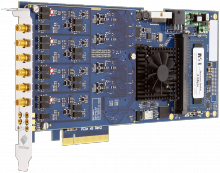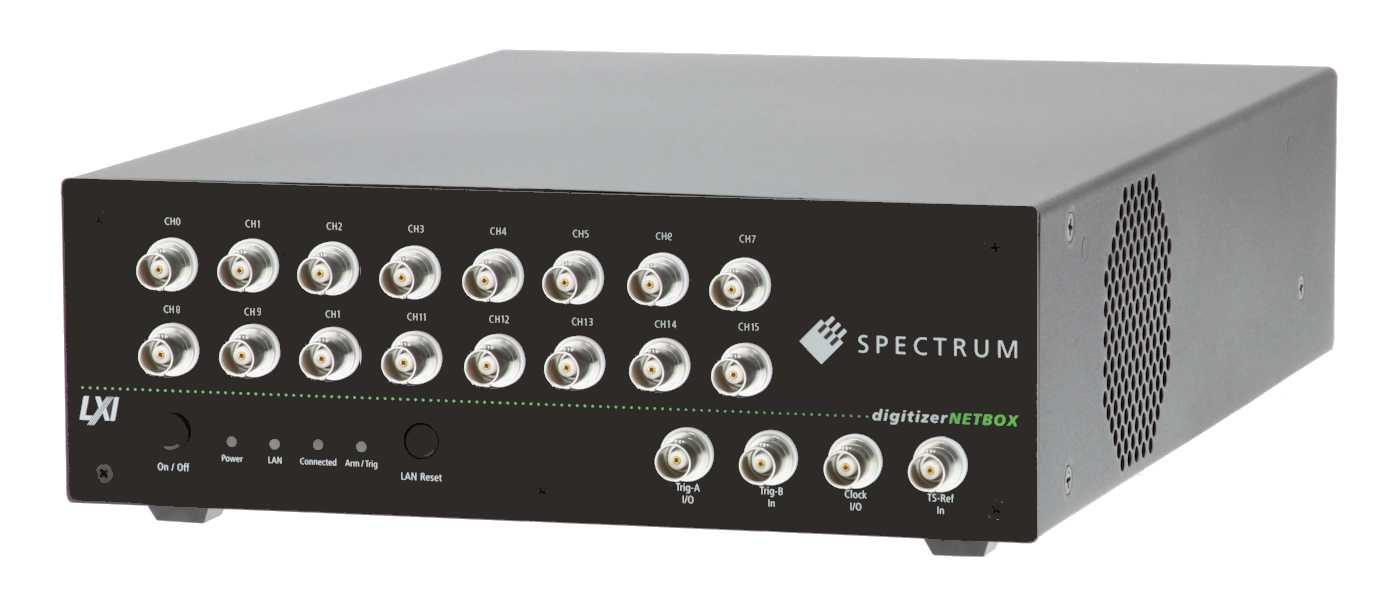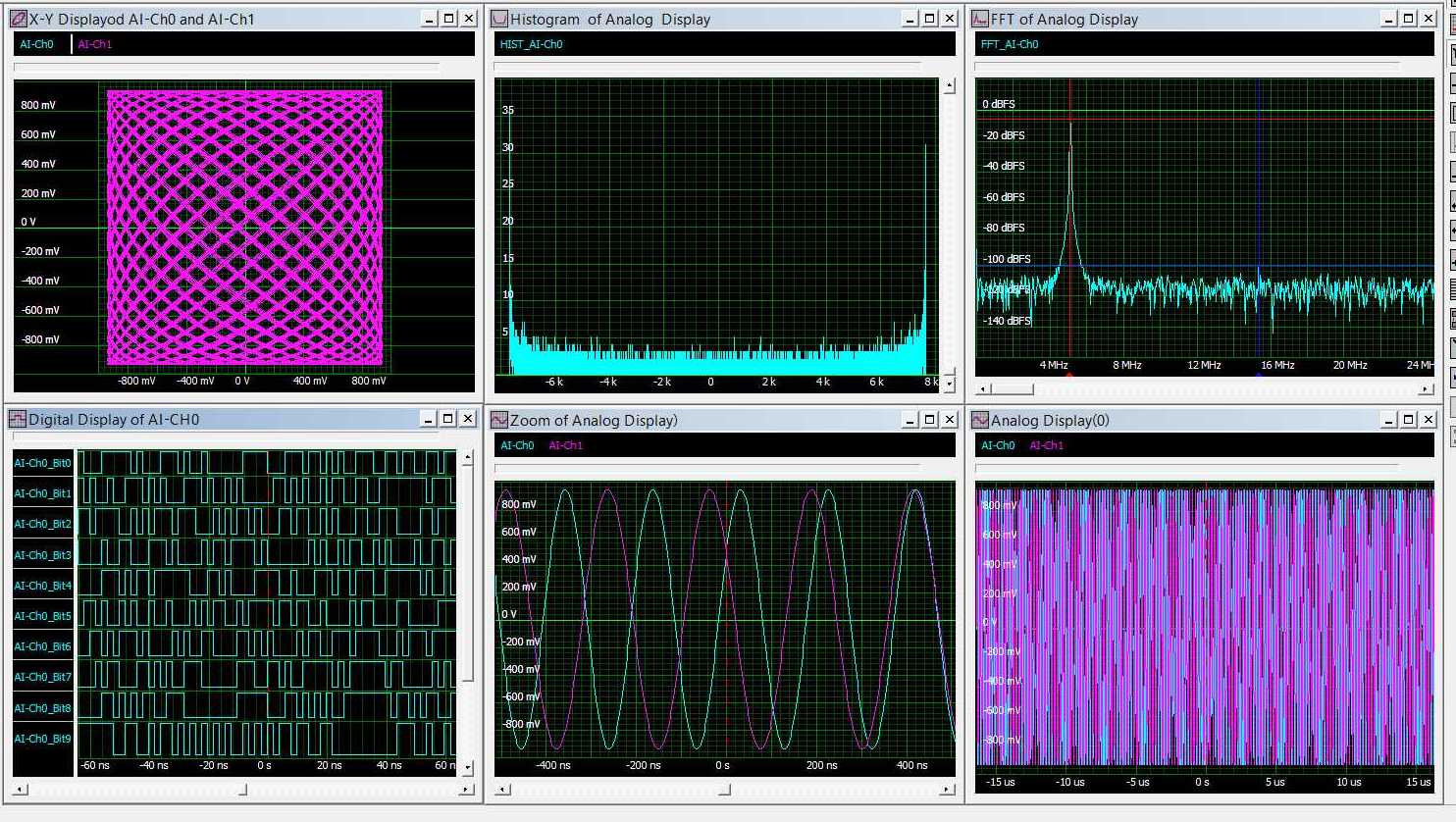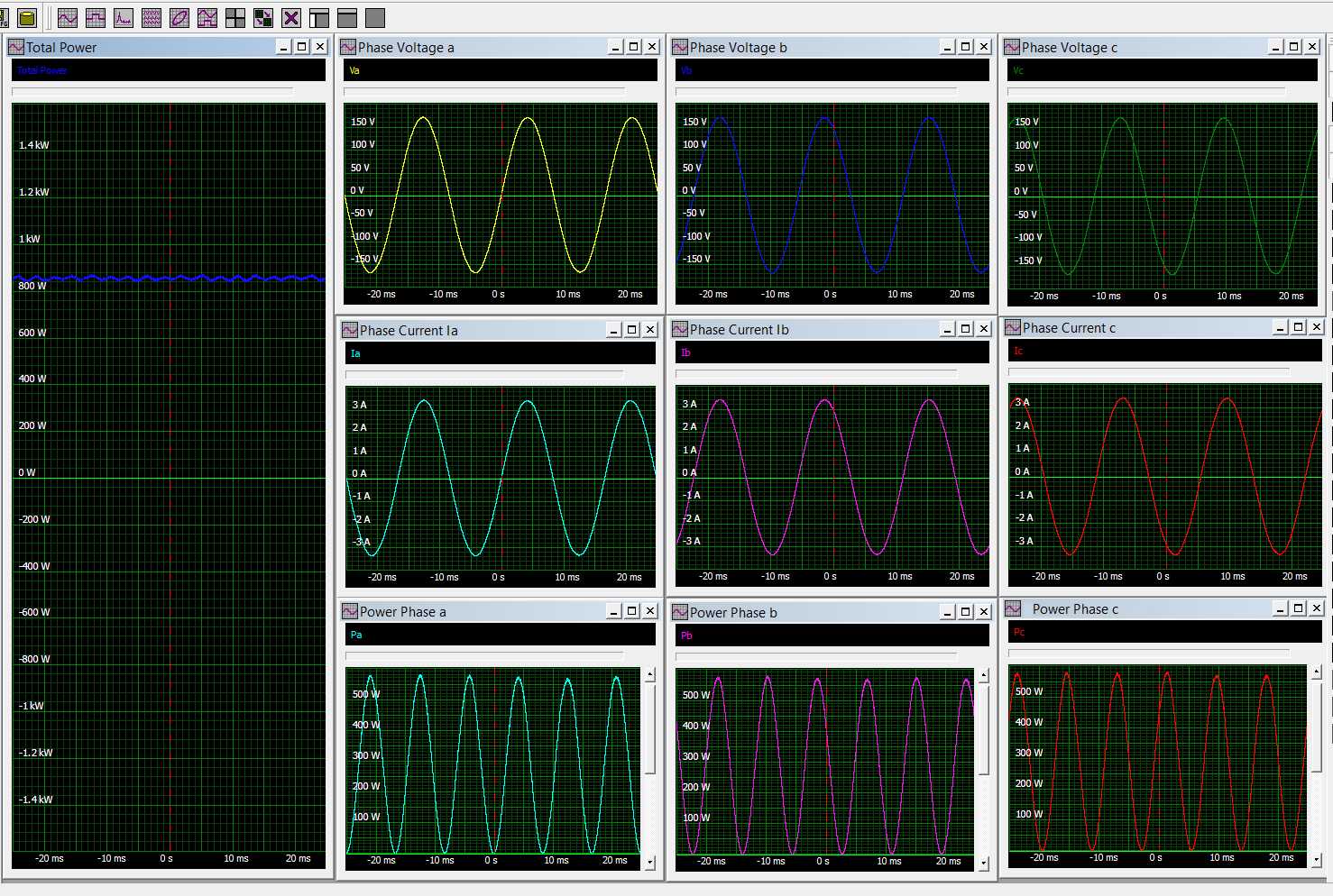 Can a digitizer be used as an oscilloscope? What is the difference between an oscilloscope and a digitizer? Should I better use a digitizer or an oscilloscope in my next application? These are interesting questions and the best way to start to answer these is the look up the dictionary definition of an oscilloscope: "An electronic instrument used to measure changing electric voltages. It displays the waveforms of electric oscillations on a screen."
Can a digitizer be used as an oscilloscope? What is the difference between an oscilloscope and a digitizer? Should I better use a digitizer or an oscilloscope in my next application? These are interesting questions and the best way to start to answer these is the look up the dictionary definition of an oscilloscope: "An electronic instrument used to measure changing electric voltages. It displays the waveforms of electric oscillations on a screen."
A digitizer along with appropriate software can do the same thing. It acquires an electrical voltage waveform and displays it on a screen. The biggest difference is that an oscilloscope is generally a stand-alone instrument with a self-contained display. While a digitizer is a system component, that acquires and stores an electrical voltage waveform and, with auxiliary software, displays that data on a screen.
So the answer is that; yes, a digitizer can be used like an oscilloscope. But this raises two other questions:
Why would you use a digitizer in place of an oscilloscope?
What digitizer characteristics make it a candidate for replacing an oscilloscope?
Why should you use a digitizer instead of an oscilloscope?
The first answer to this question is that digitizers can support a greater number of input channels. Digitizers offer up to 16 channels on a single card and normally multiple cards can be linked to build up systems with some hundred channels. This is a major advantage over oscilloscopes which are generally limited to fewer than eight channels per instrument.
 Figure 1: Spectrum digitizers offer up to 16 channels for a single digitizer card or LXI module and up to 256 channels when up to 16 cards/modules linked.
Figure 1: Spectrum digitizers offer up to 16 channels for a single digitizer card or LXI module and up to 256 channels when up to 16 cards/modules linked.
Digitizers also offer multiple channels with a smaller form factor. Compare a eight channel digitizer with an eight channel oscilloscope and you will readily see the difference. The digitizer card is so small that it can plug directly into a vacant PCIe slot in most modern PC's. Digitizers also offer a considerable advantage in that they have much lower power consumption for the same number of channels. The next consideration is vertical resolution. Oscilloscopes offer a maximum of 8 to 12 bits of resolution while fast digitizers offer from 8 to 16 bits of resolution. Keep in mind that resolution is bandwidth dependent so you must compare instruments of the same bandwidth.
If you need to move the data with high throughput to a PC for processing then the digitizer is the best choice. Spectrum M4i digitizers can stream data at up to 3.4 GB/s over the PCIe bus while stand-alone Oscilloscopes normally use much slower interfaces like USB or LAN. This makes the data from the digitizer available orders of magnitude faster than that from the oscilloscope. So the digitizer is certainly the instrument of choice whenever customized signal processing and data analysis is required.
Another issue is if you need to make measurements remotely. Network based digitizers like the Spectrum digitizerNETBOX offer LXI control and data transfer so that the digitizer can be located a great distance from the measurement location. This is ideal if you need to view data and control an instrument from a safe control room, from your office, or even from some other location on your companies LAN.
The digitizer is a system component that is expandable. It is easy to increase the number of channels and the configuration of a digitizer system. Change or add cards and you can modify the available bandwidth, sampling rate, and record length. In contrast the oscilloscope is an instrument with a relatively fixed configuration.
Comparision of advantages of a digitizer and an oscilloscope:
| Digitizer Advantages | Oscilloscope Advantages |
| Buy only what you need - from one to a large number of channels per system, expandable at need. |
Higher overall bandwidth available (at a cost) |
| Higher vertical resolution available at a given bandwidth | Highly interactive viewing and control (touch screens, front panel controls) |
| Small, compact, low power instrument | Large number of compatible probes |
| High data throughput | Large number of built-in measurements and analysis techniques available (at a cost) |
| Lower cost per channel | Compact all-in-one unit |
| Customizable measurements and analysis (user programmable and third party software) | No "system integration" needed |
What digitizer characteristics make it a candidate for replacing an oscilloscope?
There are hundreds of digitizer models and configurations from which to choose. Once you get past the basic questions of the number of channels and the bandwidth there are several more things you have to consider in selecting a digitizer to replace an oscilloscope.
The first is to look at the sample rate. Is it fixed or does it offer a selection of sample rates? Oscilloscopes offer selectable sample rates so that you can view different frequency signals. A digitizer replacing an oscilloscope should do so as well. In general, the sample rate should be four to five times the bandwidth to accurately digitize waveforms with fast edges. Some digitizers offer a phase locked loop based timebase (PLL) that is programmable. Additionally, you can even use an external clock or external reference clock if you wish to drive or synchronize the sampling rate with another source.
Acquisition memory determines the longest time record that you can acquire without dropping the sample rate. Spectrum M4i digitizers e.g. offer up to 4 GSamples of memory as standard, this is about four times the maximum memory of a high end oscilloscope. In practice this means the digitizer can record longer waveforms without the need to lower the sampling rate (and therefore loose valuable time resolution).
Digitizers used as an oscilloscope also need to have a flexible front end configuration. Spectrum's M4i.44xx series of 14 and 16 bit digitizers offer both 50 Ohm and 1 MOhm inputs in its buffered input and a 50 Ohm high frequency input path with very high signal integrity. Both input paths offer multiple input ranges just like an oscilloscope.
Oscilloscopes offer real time and segmented acquisition modes. Sequential mode allows the acquisition memory to be segmented and, for applications where multiple events are to be acquired, it can reduce the acquisition dead time (the rearm time between each event). Digitizers generally offer a number of different acquisition modes. Some digitizers provide ring buffer mode (similar to an oscilloscope's real time acquisition), FIFO or streaming mode, multiple recording (segmented mode), gated sampling, and a multiple time base (ABA mode) which combines slow continuous recording with a fast acquisition on trigger events. These multiple acquisition modes feature a fast re-arm time. In the case of the Spectrum M4i.22xx 8 bit digitizer it is as short as 80 sample periods (i.e. 16 ns at 5 GS/s). This is considerably shorter than the 1 µs re-arm times of most oscilloscopes. These different acquisition modes allow the user to configure the digitizer to best use the acquisition memory for different applications.
Triggering synchronizes data acquisition with external events. Effective use of a digitizer requires great flexibility in device triggering. Simple edge triggers based on the slope and signal level are pretty standard on most digitizers. Many offer window triggering as well. Trigger sources include the acquisition channels and multiple external trigger inputs. For maximum trigger flexibility these inputs along with a rearm capability can be combined logically to produce advanced trigger states.
One of the key advantages of digitizers is the ability to rapidly stream data to a computer for further analysis and archiving.
The Spectrum digitizers, in FIFO mode (streaming mode), are designed for continuous data transfer between the digitizer buffer memory and PC memory. Utilizing a PCI Express x8 Gen 2 interface streaming speed is up to 3.4 GB/s. Oscilloscopes, mostly using LXI or USB interfaces are considerably slower in their ability to move data to a computer. Combining the digitizers streaming capability with a fast data storage system (like a RAID based disc drive unit) makes the digitizer perfect for applications where long seamless waveforms need stored. Systems can be easily configured to allow hours or even days of continuous recording.
Software for acquiring, viewing, measuring and analyzing data from modular digitizers
Digitizers are 'blind' instruments and do not normally have an integral display to view, measure or analyze the data they collect. Instead, these functions are usually performed by a PC. Spectrum supplies a fully featured program called SBench 6. The program provides the ability to control the digitizer and view the waveforms acquired. It can perform both simple and complex measurements and offers multiple analysis tools. SBench 6 supports all Spectrum digitizer families including the digitizerNETBOX and is a powerful application for verifying the operation of the digitizer right out of the box. It also allows the user to confirm the digitizer's operation during the development of their own custom software as well as serving as an offline station for reviewing and analyzing data. SBench 6 provides display, control, measurement and analysis functions allowing the digitizer to be operated just like an oscilloscope.
 Figure 2: Digitizer software provides display and analysis capabilities like an oscilloscope.In Figure 2 two channels of data have been acquired and are shown in the lower right hand grid. A horizontal expansion of that trace is shown in the lower center grid. The upper left grid contains an X-Y plot of those two signals. The lower left grid contains a digital display of the fourteen bits making up the signal on channel 1. The Fast Fourier transform (FFT) of the signal from channel 1 is shown in the upper right display while the upper center display contains the histogram of the same signal. As can be observed, combing a digitizer with SBench 6 provides all the display and analysis capability of an oscilloscope.
Figure 2: Digitizer software provides display and analysis capabilities like an oscilloscope.In Figure 2 two channels of data have been acquired and are shown in the lower right hand grid. A horizontal expansion of that trace is shown in the lower center grid. The upper left grid contains an X-Y plot of those two signals. The lower left grid contains a digital display of the fourteen bits making up the signal on channel 1. The Fast Fourier transform (FFT) of the signal from channel 1 is shown in the upper right display while the upper center display contains the histogram of the same signal. As can be observed, combing a digitizer with SBench 6 provides all the display and analysis capability of an oscilloscope.
SBench 6 also provides cursors (two for each display grid) and measurement parameters. Cursors are demonstrated on the FFT display where the amplitude and frequency of the spectral lines at 5 and 15 MHz are measured. The cursor readouts appear in the Info pane at the left of the figure associated with the FFT display.
Three of the 21 measurement parameters are also shown in the Info pane associated with channel AI-Ch0. These are the peak to peak amplitude, effective (rms) amplitude, and frequency.Analysis tools in SBench 6 include averaging, waveform arithmetic, Fast Fourier Transform, histogram, filtering and conversion between the analog and digital domains.
A Practical Measurement Utilizing a Digitizer in Place of an Oscilloscope
 Figure 3: Three-wattmeter power measurement using a digitzer.In Figure 3, we show the phase voltages (Va, Vb, and Bc), phase currents (Ia, Ib, and Ic), and phase power dissipation (Pa, Pb, and Pc) for a WYE-connected load (where we have access to both the phase and line voltages).
Figure 3: Three-wattmeter power measurement using a digitzer.In Figure 3, we show the phase voltages (Va, Vb, and Bc), phase currents (Ia, Ib, and Ic), and phase power dissipation (Pa, Pb, and Pc) for a WYE-connected load (where we have access to both the phase and line voltages).
Multiply each phase voltage by its related phase current and the result is the instantaneous power in each phase. The mean value of the instantaneous power is the real power component. The sum of all three phase-power readings is the total real power of the load.
This measurement is referred to as the three-wattmeter power measurement. In order to make this measurement using external differential probes to measure the voltages, it will require six channels. If single ended probes are used then the number of channels increases to nine. The flexibility of being able to specify up to 16 channels in a single digitizer card is a major advantage in this type of measurement. The phase voltages are shown in the top row of Figure 2. Phase currents appear in the center row. Each of the waveforms are multiplied together using analog calculations. The resultant phase power appears in the bottom row. The sum of all three phase power waveforms, again an analog summation, appears in the leftmost grid labeled 'Total Power.' Note that the total power is relatively constant. Parameters, shown in the Info pane on the left read the average values of the individual phase power waveforms along with the total power. The sum of the average values of the three phase-power measurements equals the average total power. The measured result for the total power is 850.9 Watts.
Conclusion
These examples show the power in combining a digitizer with a powerful software to make measurements just like an oscilloscope. Perhaps your next 'oscilloscope' purchase might actually turn out to be one for a digitizer?
Based on a text written by Spectrum Systementwicklung Microelectronic GmbH
www.spectrum-instrumentation.com/

 How to resolve AdBlock issue?
How to resolve AdBlock issue? 